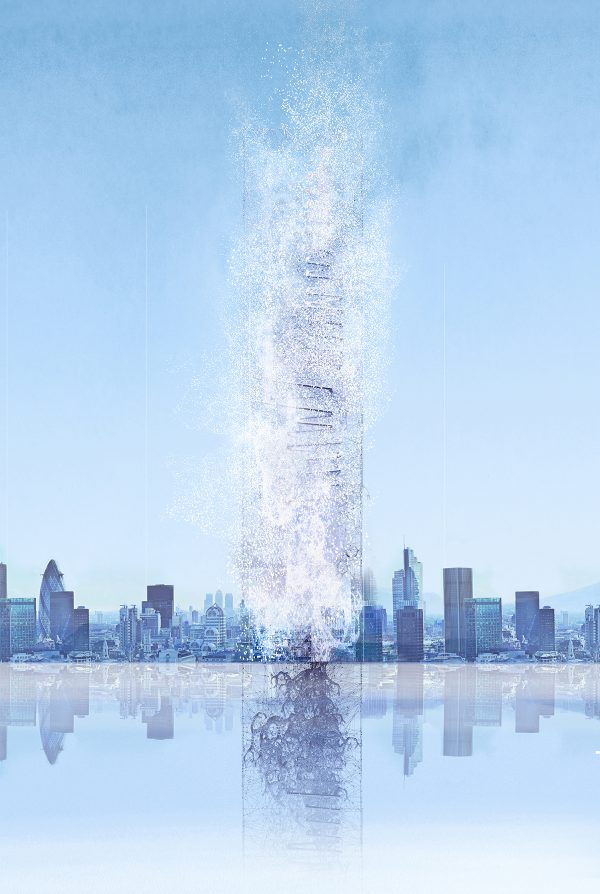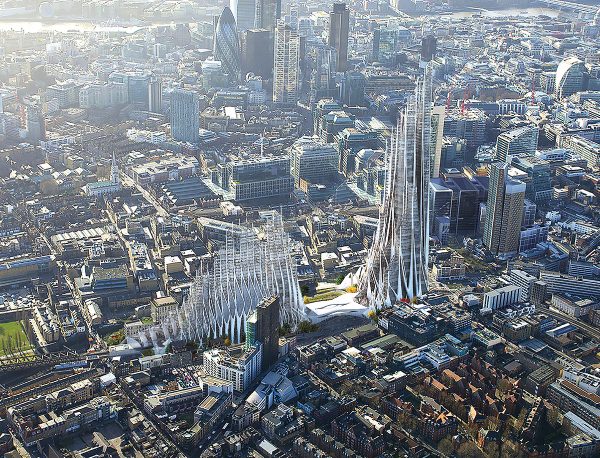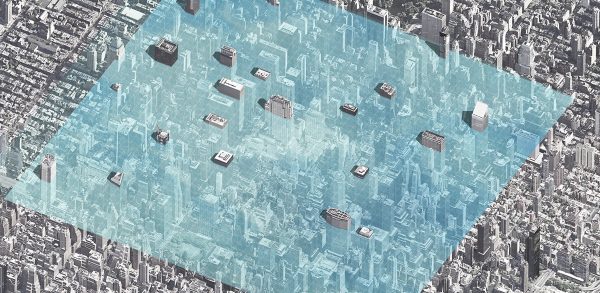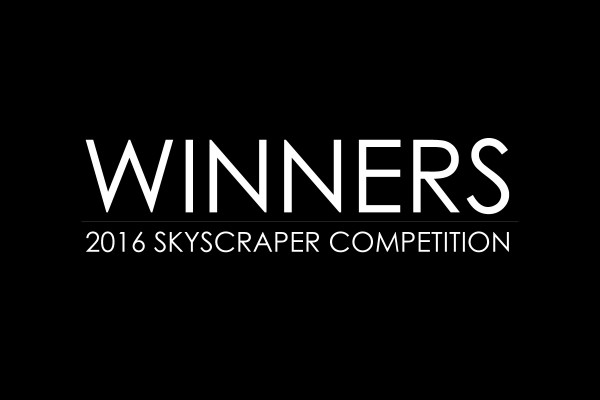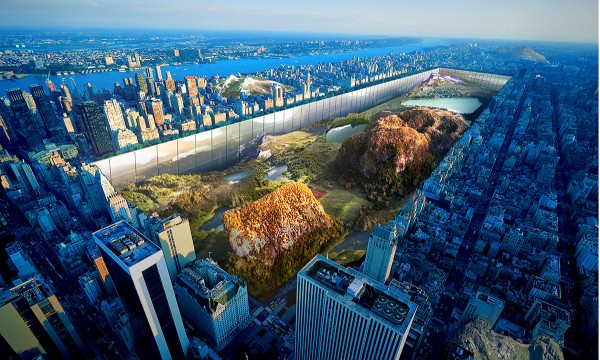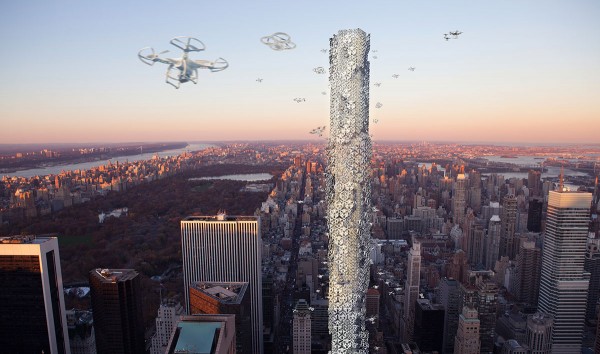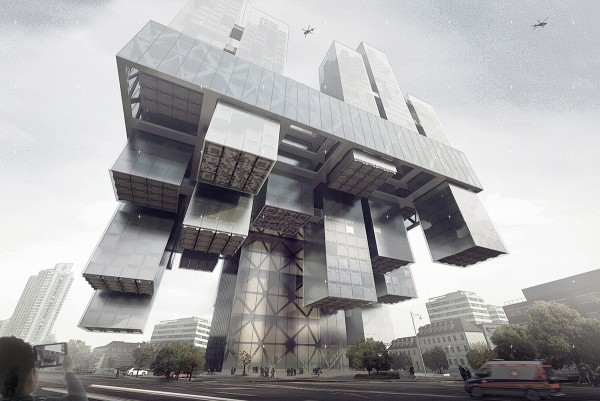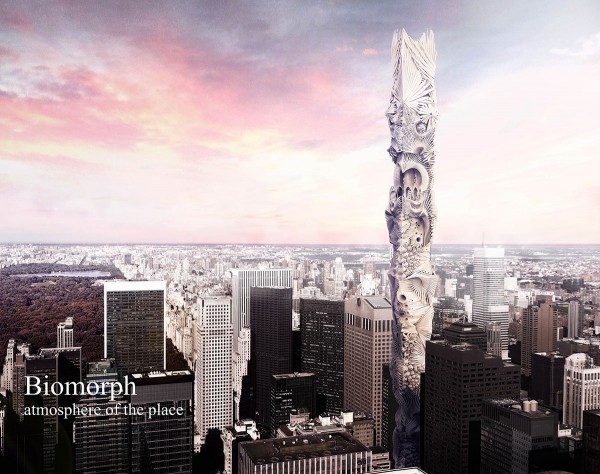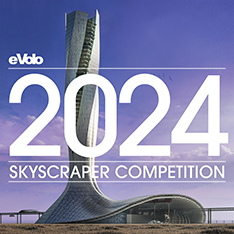Honorable Mention
2017 Skyscraper Competition
Joanna Targowicz, Mateusz Binkowski
Poland
Death and Oblivion
Death is inseparable aspect of our life. Cemeteries are usually located very close to us, occupied a lot of valuable land within city center which can be returned to citizens as a new, vibrant public space. However, it is very important to take care of our history and personal experiences, and share them with other people. Nowadays people tend to forget about importance of achievements done by our ancestors. Constantly changing world needs a new kind of medium to immortalize people’s cultural impact on society.
Data Cemetery
The following is a proposal of new unique form of cemetery, not as a burial ground but infinite archive of memories and civilization milestones. Cloud like structure of the building is filled with diamond data storage particles made from ashes of the dead. The data cubes contain their speeches and messages to future generations. It provides a unique opportunity of reviving memories of other people, and proves that everyone has a moralizing story to tell.
Testament of Civilization
Rapidly growing and constantly changing, chaotic world also needs a solution oriented towards creation of protected archive to preserve world heritage and achievements of world’s brightest minds. Over the centuries many cultural relicts, works of art and manuscripts has been destroyed in social and economical conflicts. The Cloud in its diamond-based memory, also stores this type of data in a form of brightest people’s memories that can be presented by using holographic projections. Instead of creating depressing, silence empty space, the complex works as a learning facility and a monument of all humanity.
Tree of Knowledge
Building acts as a modern type of memorial tree that can survive harsh environment and natural disasters, because of its structural integrity. Its shape forms a sculptural timeline spanned across full height that represents current condition of the society. Thicker branches are sign of natural cataclysm, war or epidemic, thinner ones represent a peaceful time.
Diamonds are forever
Traditional methods of data storage are very fragile and have live expectancy between 10- 30 years. Books, photography and films are also very vulnerable to external factors.
Human body contains 23% of carbon, which can be transformed to diamonds by applying pressure and high temperature. Recent studies lead by Siddharth Dhomkar, a physicist at the City College of New York demonstrate the possibility of using diamond as a platform for the super dense optical data storage by creating imperfections in their atomic structure.
By forming a system that can survive couple thousand years intact, the common conception of ‘ashes to ashes, dust to dust’ is denied. The Cloud is a monument of people immortalization.
Archiving Machine
After entering the complex, the body is transported to underground part of the building where the cremation process takes place. After cremation carbon is separated from the ashes. Next step is heating amorphous carbon to temperature of 2500°C to create graphite. Then the temperature is lowered to 1480°C and 5.99843885 × 10^9 Pascals of pressure is applied.
After the process, the data is put into diamonds by creating laser engraved, sorted imperfections in its structure. After the process is completed fresh “Archiving Cells” are placed into selected Memories Cluster and become an integral part of the building.
To provide self-sufficiency, the building is powered by geothermal power plant located in lowest part of the building. The Cloud is also reducing a carbon footprint of our society by converting excess CO2 into diamond composite which is used to reinforce the main structure of the building.
New Beginning
Because the data stored inside diamond memory are almost indestructible Cloud Archive will be a greatest achievement of mankind. After global cataclysm it will remain a silent witness of our society and will become guidance for the new one. Maybe someday, someone will discover an intact data, which lay new foundation for another civilization. Read the rest of this entry »

